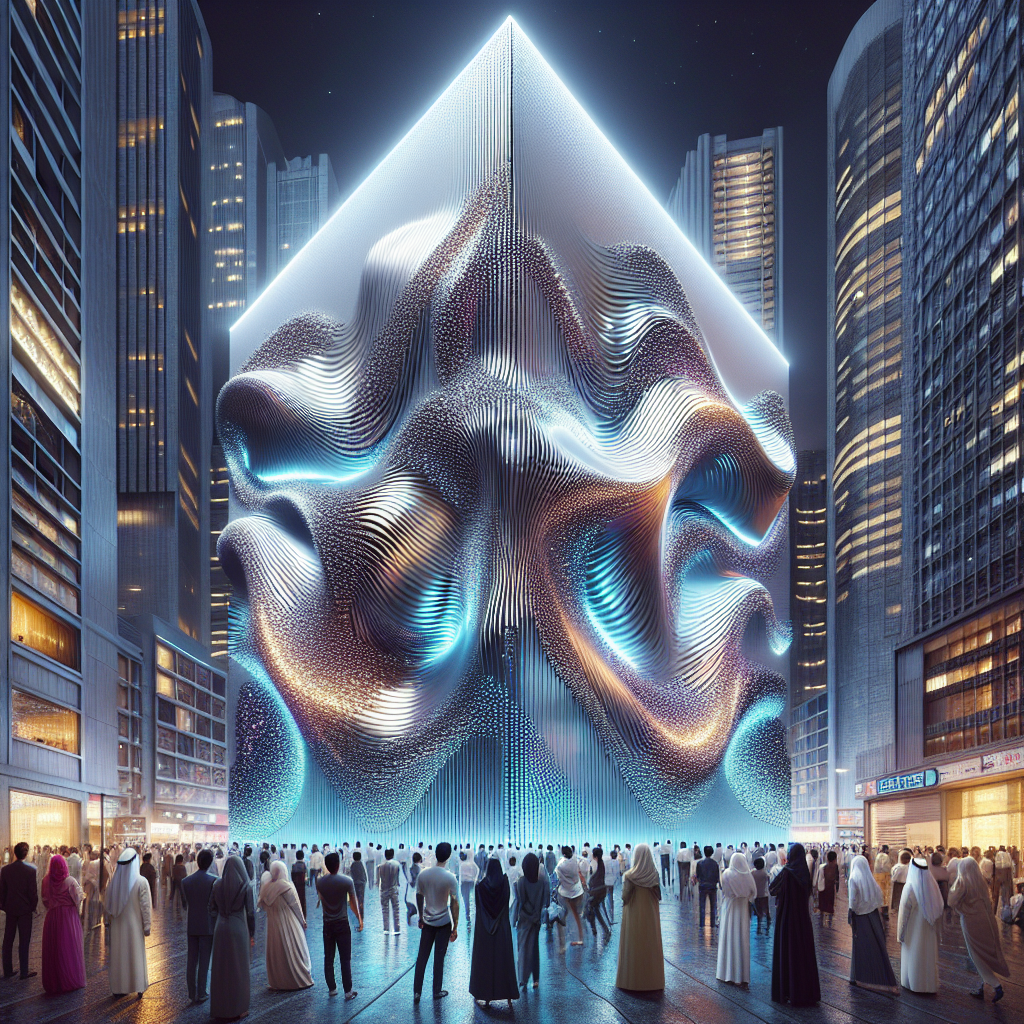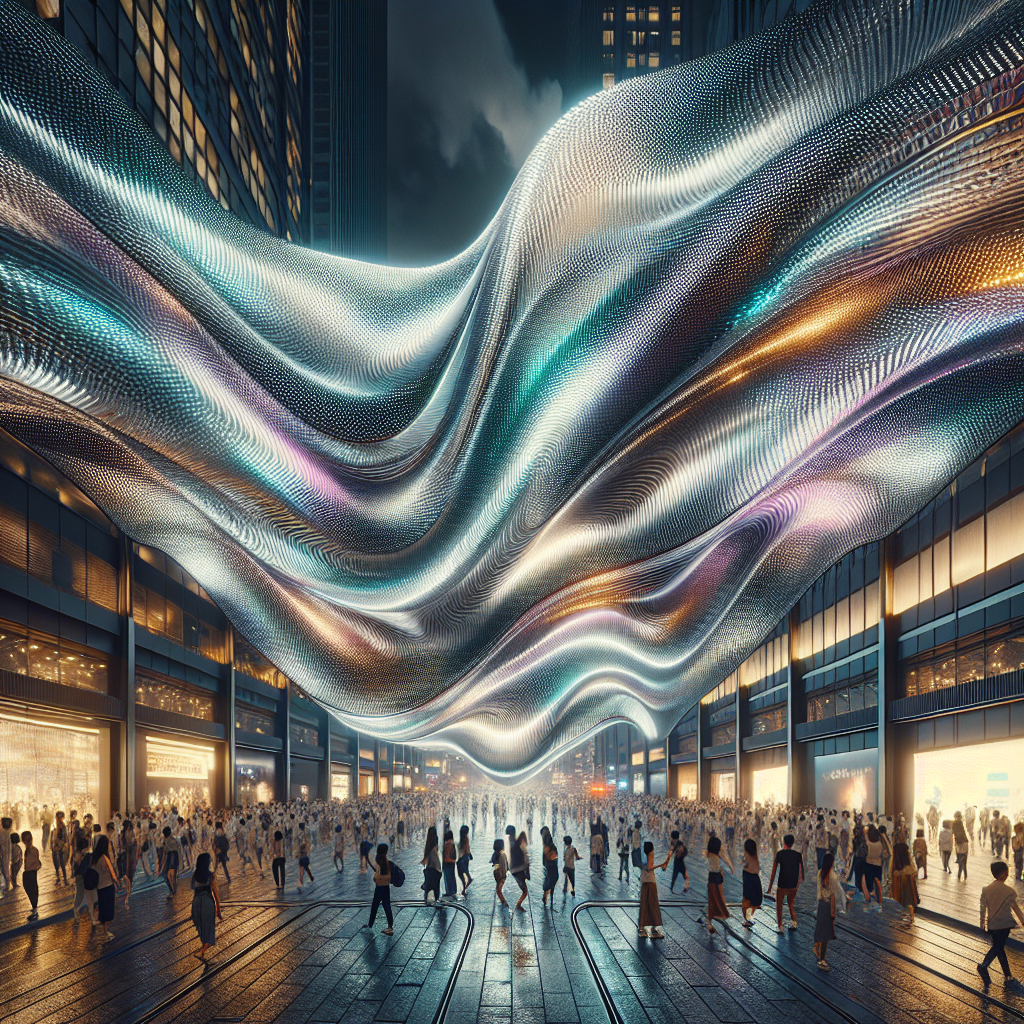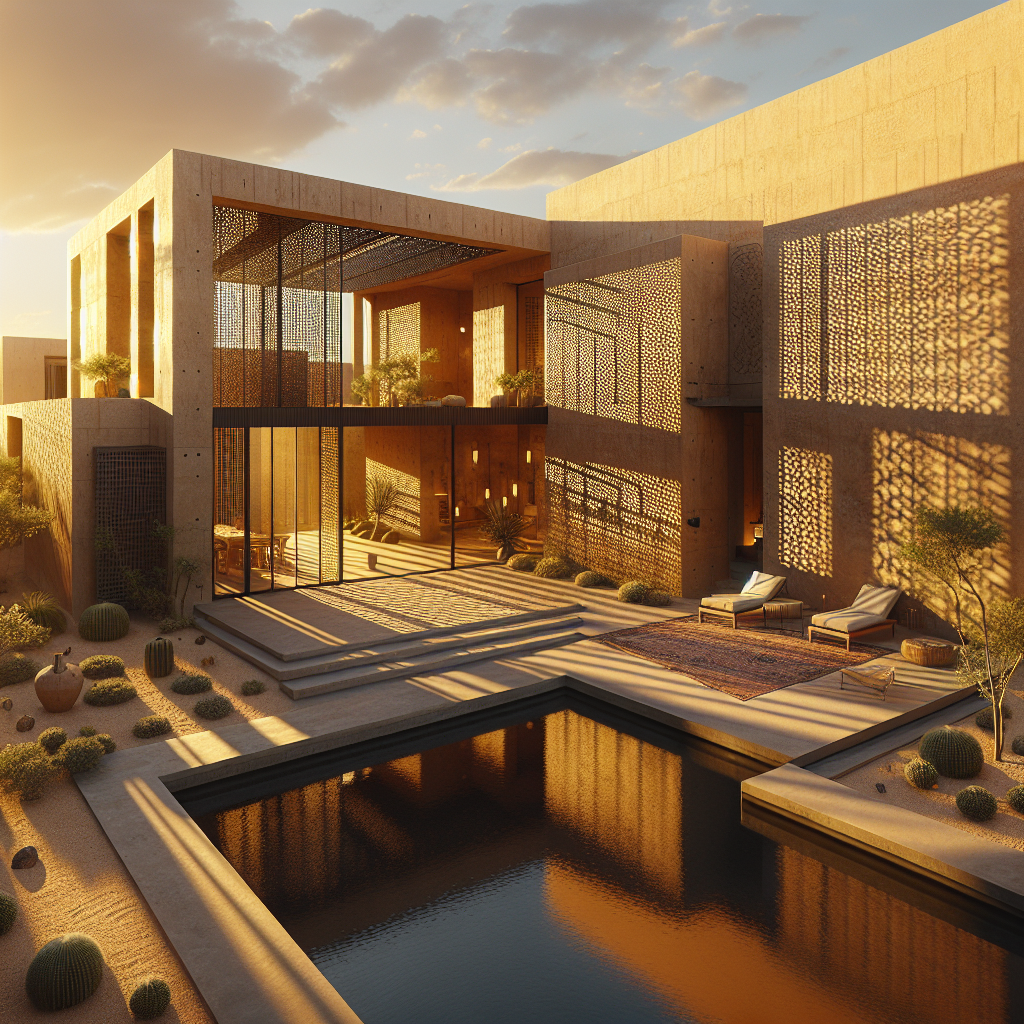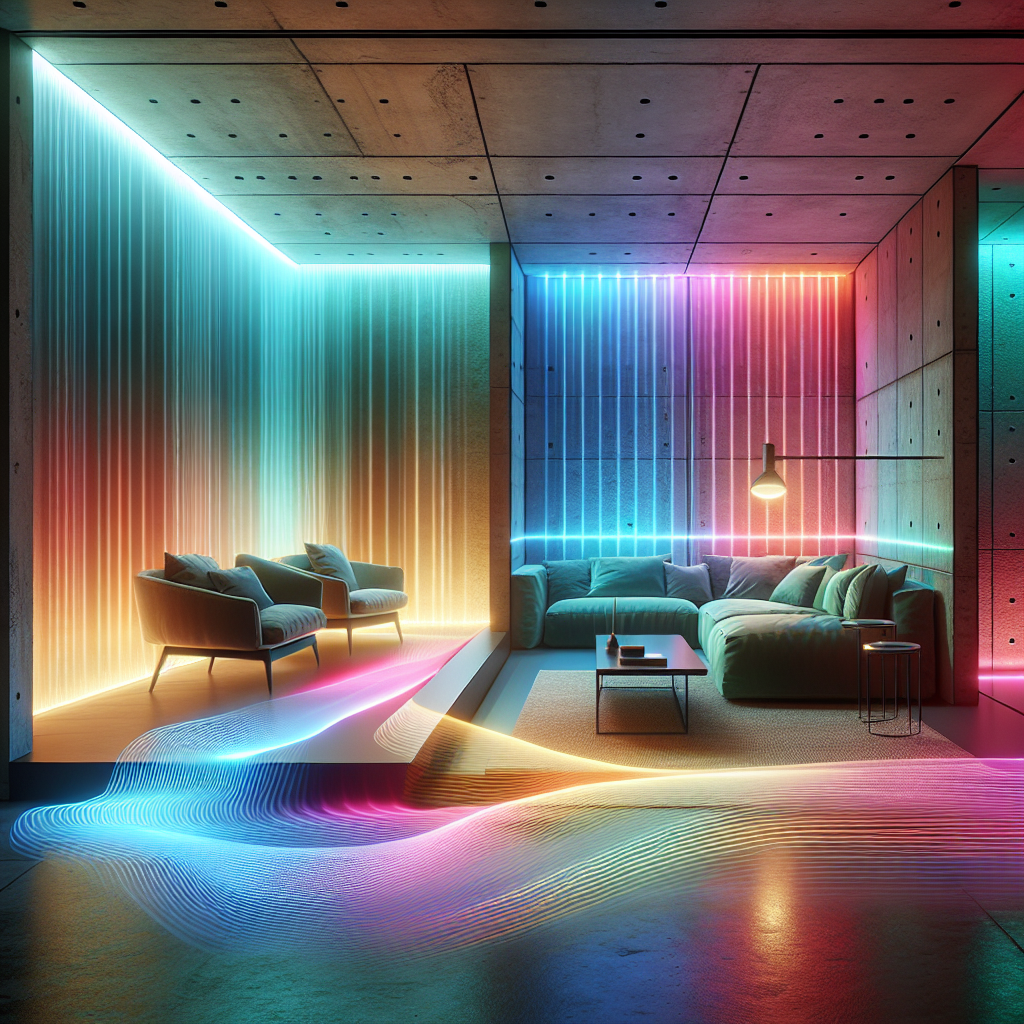Kinetic facade graffiti: dynamic tiles flipping to reveal new patterns
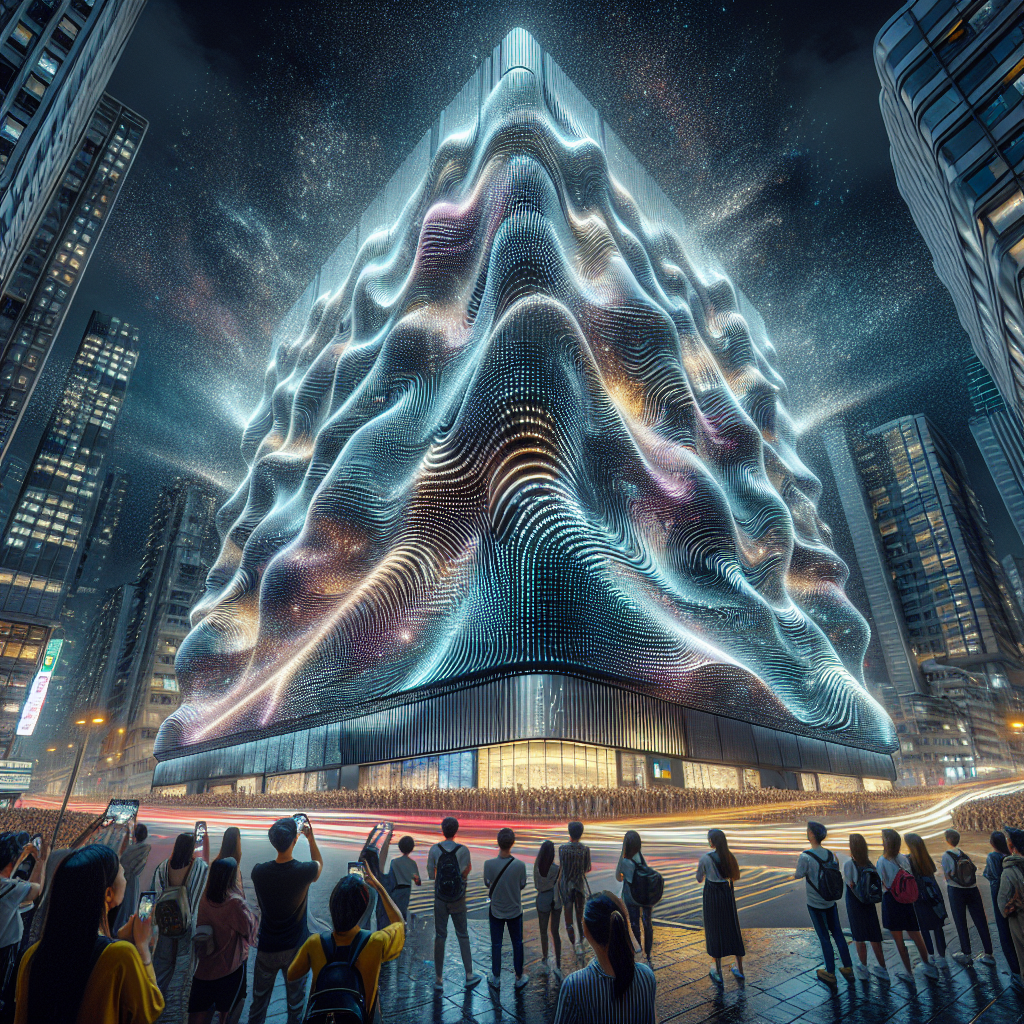
Kinetic Facade Graffiti: Dynamic Tiles Flipping to Reveal New Patterns
In the evolving dialogue between architecture, technology, and urban art, a new phenomenon is reshaping the cityscape: kinetic facade graffiti. This emerging form of architectural expression transforms static walls into living canvases, where dynamic tiles flip in choreographed sequences to reveal shifting patterns, colors, and messages. The result is a mesmerizing fusion of motion, materiality, and meaning — a kinetic architecture that blurs the line between building and artwork.
The Architecture of Motion
At its core, kinetic facade graffiti is an evolution of kinetic facade design — a field that integrates movement into architectural envelopes to respond to environmental or aesthetic stimuli. Yet, unlike traditional kinetic facades designed primarily for shading or ventilation, this new wave embraces visual storytelling and urban communication. Each tile, often a lightweight aluminum or composite panel, acts as a pixel in a massive, ever-changing mosaic. When actuated by wind, solar power, or digital control systems, these tiles flip to reveal contrasting surfaces — matte to gloss, monochrome to color, or even textured to smooth — creating ephemeral patterns that ripple across the building’s skin.
The visual effect recalls the shimmering movement of fish scales or the dappled play of sunlight on water. In motion, the facade becomes a dynamic artwork — part architecture, part performance. The term “graffiti” here is metaphorical, referring not to spray paint but to the rebellious spirit of urban expression and the democratization of visual culture. Buildings cease to be inert; they become communicative, reactive, and alive.
From Static Walls to Living Canvases
The inspiration for kinetic graffiti can be traced to both technological innovation and artistic experimentation. Early prototypes emerged from interactive art installations and responsive design projects that explored how surfaces could react to human presence or environmental data. The leap to architectural scale was inevitable. As façade systems became increasingly modular and digitally controlled, architects began to imagine buildings that could visually evolve in real time.
One of the most compelling examples is Ned Kahn’s “Wind Facades,” where thousands of small aluminum panels flutter in response to air currents, turning entire buildings into instruments of environmental visualization. Yet, kinetic facade graffiti pushes this further by introducing programmable control — allowing patterns to be designed, stored, and displayed much like digital animations. The result is a form of media architecture that doesn’t rely on screens or LEDs but on the physical choreography of material surfaces.
Technology Meets Craft
Behind the poetic movement lies a sophisticated technological framework. Each tile in a kinetic graffiti system is mounted on a pivot or hinge mechanism, often magnetically balanced to minimize friction. Actuation can be mechanical, pneumatic, or even piezoelectric, depending on the desired responsiveness. Advanced systems integrate IoT sensors and machine learning algorithms to adapt the facade’s behavior to environmental conditions — adjusting patterns based on wind speed, temperature, or sunlight intensity.
Material innovation plays a crucial role. Lightweight composites, carbon fiber laminates, and reflective coatings ensure durability while maintaining fluid motion. Some designers are experimenting with solar-active tiles that generate energy as they move, merging sustainability with spectacle. The interplay of engineering precision and artistic intent recalls the ethos of the Bauhaus movement — where form and function were inseparable, and technology was a medium for creative expression.
Urban Art in Motion
In the context of urban design, kinetic facade graffiti represents a radical rethinking of public art. Unlike static murals or digital projections, these facades are inherently temporal. They change with the weather, the time of day, or the rhythm of the city itself. This dynamism fosters a deeper connection between architecture and its surroundings, transforming buildings into performative participants in the urban ecosystem.
Imagine a civic center whose facade ripples like a field of metallic leaves during a breeze, or a cultural pavilion whose tiles flip to reveal local artists’ patterns each week. In such scenarios, architecture becomes a medium for community storytelling. The building’s surface is no longer a boundary but a living interface — one that communicates, surprises, and engages.
This approach aligns with broader movements in public art and design, where interactivity and participation are increasingly valued. As cities seek to humanize their built environments, kinetic graffiti offers a sustainable, non-invasive alternative to digital billboards — one that speaks through reflection, texture, and rhythm rather than light pollution.
Environmental Responsiveness and Sustainability
Beyond aesthetics, kinetic facade graffiti embodies a profound environmental intelligence. Many systems are designed to operate passively, using natural forces like wind or solar heat to trigger movement. This not only reduces energy consumption but also makes the facade a visible indicator of local climate conditions. The movement of tiles can enhance natural ventilation, modulate solar gain, and even improve acoustic performance — merging art with bioclimatic design.
Such principles resonate with the ethos of biophilic design, which emphasizes sensory engagement and connection to natural rhythms. A kinetic facade that shimmers in response to the wind invites occupants to perceive the environment more intimately. It becomes a tactile, visual reminder of the building’s ecological context — a poetic counterpoint to the sealed glass boxes that dominate many skylines.
Case Studies and Global Adoption
Across the globe, architects and artists are experimenting with kinetic graffiti as both a design language and a social statement. In Seoul, a mixed-use tower features thousands of mirrored tiles that rotate to display seasonal motifs, creating a dialogue between architecture and nature. In Copenhagen, a waterfront museum employs color-shifting panels that respond to humidity, turning the building into a barometer of the city’s maritime climate. Meanwhile, in Los Angeles, a community art project transforms a public housing block into a kinetic mural that changes daily, reflecting local cultural events.
These examples underscore the versatility of the medium. Whether powered by wind, data, or human interaction, kinetic graffiti adapts seamlessly to different contexts — from high-end cultural institutions to grassroots urban interventions. It also offers a new model for sustainable urban branding, allowing cities to project identity through motion rather than static iconography.
The Future of Expressive Architecture
As computational design tools and responsive materials advance, the potential of kinetic facade graffiti continues to expand. Architects are exploring hybrid systems that combine augmented reality overlays with physical movement, enabling passersby to experience layered narratives through their smartphones. Others envision facades that respond to collective data — such as air quality or social media activity — turning buildings into civic sensors that visualize the pulse of the city.
In this sense, kinetic graffiti is not merely decorative. It represents a shift toward architecture as communication — a medium that reflects the complexity, diversity, and dynamism of contemporary urban life. As we move deeper into an era defined by interactivity and environmental awareness, the buildings that surround us may no longer be silent. They will shimmer, whisper, and move — telling stories in patterns of light and shadow, motion and stillness.
Reimagining the Urban Canvas
The allure of kinetic facade graffiti lies in its capacity to merge art, science, and sustainability into a single expressive gesture. It challenges the traditional notion of permanence in architecture, replacing it with a choreography of change. Each flip of a tile becomes a brushstroke in an ongoing performance — one that celebrates impermanence, adaptability, and the beauty of motion.
For designers and architects, this movement signals a broader cultural shift: from architecture as object to architecture as experience. In the kinetic facade, the city finds a new language — one that is not written in stone but in movement, rhythm, and reflection. And in that language, we may rediscover what it means for buildings to truly breathe, speak, and belong to their time.
Keywords: kinetic facade graffiti, dynamic tiles, responsive architecture, kinetic design, urban art, sustainable facades, architectural innovation

